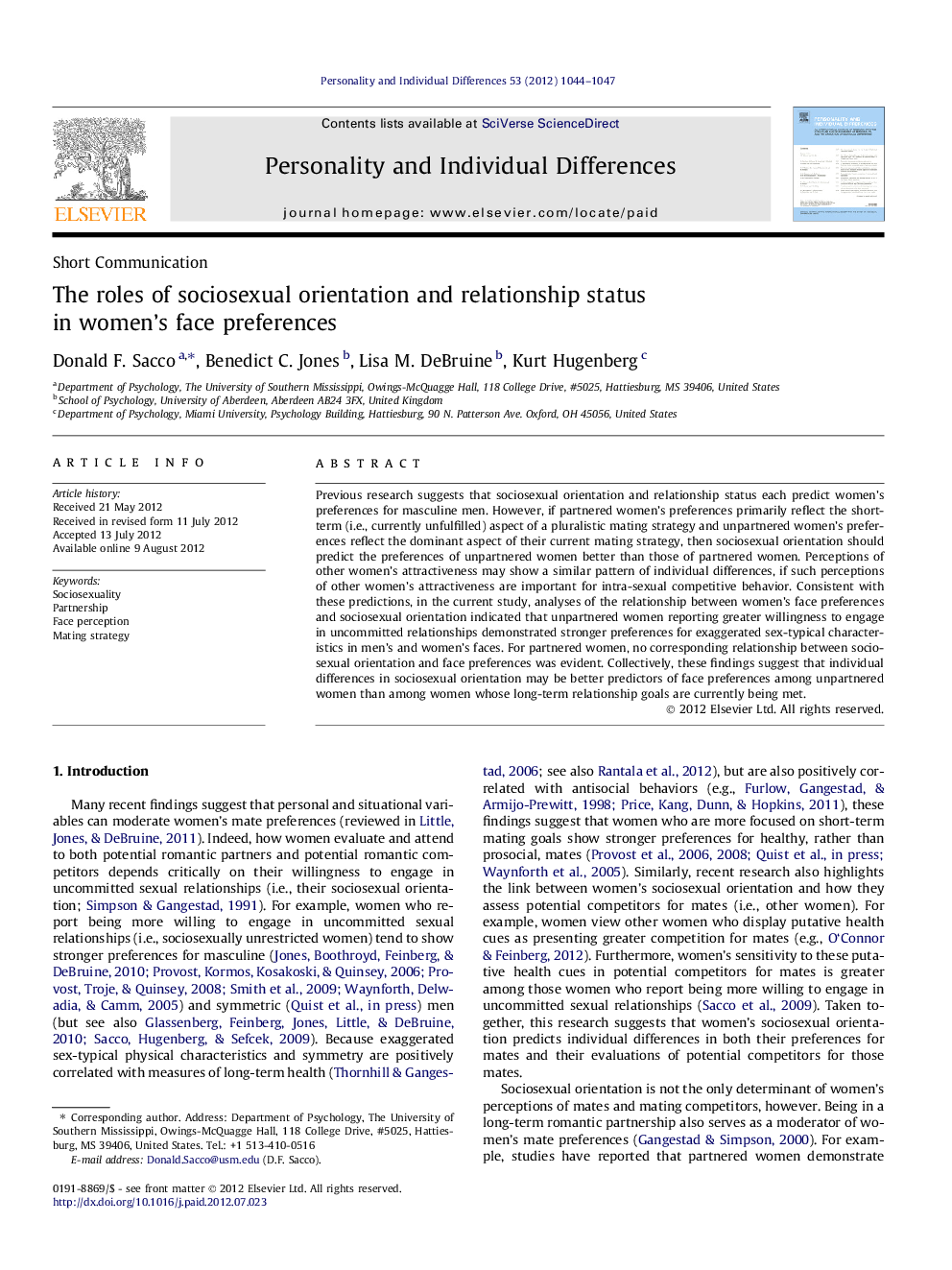| Article ID | Journal | Published Year | Pages | File Type |
|---|---|---|---|---|
| 891332 | Personality and Individual Differences | 2012 | 4 Pages |
Previous research suggests that sociosexual orientation and relationship status each predict women’s preferences for masculine men. However, if partnered women’s preferences primarily reflect the short-term (i.e., currently unfulfilled) aspect of a pluralistic mating strategy and unpartnered women’s preferences reflect the dominant aspect of their current mating strategy, then sociosexual orientation should predict the preferences of unpartnered women better than those of partnered women. Perceptions of other women’s attractiveness may show a similar pattern of individual differences, if such perceptions of other women’s attractiveness are important for intra-sexual competitive behavior. Consistent with these predictions, in the current study, analyses of the relationship between women’s face preferences and sociosexual orientation indicated that unpartnered women reporting greater willingness to engage in uncommitted relationships demonstrated stronger preferences for exaggerated sex-typical characteristics in men’s and women’s faces. For partnered women, no corresponding relationship between sociosexual orientation and face preferences was evident. Collectively, these findings suggest that individual differences in sociosexual orientation may be better predictors of face preferences among unpartnered women than among women whose long-term relationship goals are currently being met.
► Explored role of sociosexuality and partnership status in women’s face preferences. ► Sexually unrestricted and partnered women preferred putative health cues in faces. ► Sociosexual orientation predicted face preferences for unpartnered women only. ► Similar effects for judgments of men and women.
